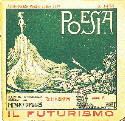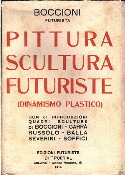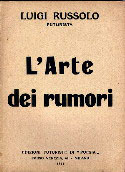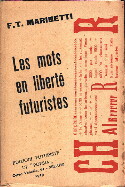WHAT’S POPPING @ FAITH POPCORN’S BRAIN RESERVE
JANUARY 2012 2012 Predictions
www.faithpopcorn.com 212.772.7778
The SHE-CHANGE
A sea change is any widespread sweeping shift that affects all elements of a system. In the coming decade we will see a sea change in the way feminine power is incorporated in society. Characteristics once thought to be solely the province of women will be adopted as best practices. We call this pervasive revolution the SHE-CHANGE.
1.VERY YOUNG WOMEN ARE LEADING THE WAY
What We Are Seeing
Young single women purchase twice as many homes as young single men. Two thirds of all undergraduate degrees and 60% of Master’s degrees are going to women. The number of women with college degrees has more than doubled in the last 30 years while the number of men with degrees has stayed the same. Single women between the ages of 22 and 30 earned 8% more than men in that age range in most U.S. cities. In 2011 all three winners of Google’s Science fair were women.
What We Are Predicting
By the end of the decade there will be more businesses started by women than men. Currently women own 35% of startup businesses.
What It Means
Women are the key to economic growth and recovery. Their creativity and gift for management make them natural employers. Monetary domination will cease to be the sole metric by which success is measured. Women will put people before profit and won’t demand the same exorbitant salaries and bonuses for which their male counterparts have become infamous. 2.THE NUCLEAR FAMILY 2.0
What We Are Seeing
Single motherhood is no longer perceived as an unfortunate situation but a conscious lifestyle decision. In Sweden 55% of births were to unmarried women and in Iceland the share was 66%. These countries have some of the smallest gender gaps when it comes to salaries. The US, with unmarried women delivering 41% of the children born is not far behind. Marriage is also losing its status as a mandatory life goal. Almost a third of Japanese women in their early 30s are unmarried and over one-fifth of Taiwanese women in their late 30s are single. Today less American women in their early 30s are married than at any other time since the 1950s. Conversely, stay-at-home dads have formed a supportive and quickly expanding community/ network. A recent survey showed that 73% of men had no problem with their spouse being the primary breadwinner. In the UK there are 10 times as many stay-at-home dads as there were a decade ago and more than a quarter of all new fathers give up at least part of their work schedule to take care of their children.
What We Are Predicting
Over the next decade the amount of households containing traditional nuclear families will decrease drastically. Right now 23% of families would be considered nuclear, with some states like Baltimore and Washington coming in with under 10%. Alternative forms of birthing, marriage, childrearing and family structuring will become commonplace.
What It Means
There will be a rise in services that provide flexibility to all different family structures. Co-parenting sites that bring single parents together to help raise children outside of marriages (coparent.co.uk, WeCanParentTogether.com) will become the new matchmaking craze. Day and night care centers will become one of the most important and lucrative services available.
3.THE NEW CHIVALRY
What We Are Seeing
The phrase “the weaker sex” no longer holds any meaning. While men and women have different strengths and weaknesses women’s strengths are becoming more viable. Women are experiencing an upswing in their collective power while at the same time men are confronting some negative side effects of changing societal expectations. Men are 3 times more likely to suffer from alcoholism and account for 75% of all suicides. Internet pornography is negatively influencing male sexuality leading to more depression and dysfunction. Men smoke more, eat worse and are not as good at dealing with stress. Women on the other hand are learning to protect themselves, effectively removing the old notion that they need men for the job. In recent years the number of women purchasing guns has risen 73% with the majority of the women buying the weapons for personal protection.
What We Are Predicting
It will be up to women to protect men in this new world order. They will need to teach men how to survive and thrive in a society that puts more and more value on feminine characteristics.
What It Means
Males’ problems with aggression, depression and performance will continue to worsen as long as they go untreated. Educators and employers will have to deal with the sociological problems men are experiencing. Support systems and counseling will be made available to help young men deal with issues as they become problematic. Employers interviewing for positions will need to gauge how in touch with their emotional side male candidates are. Unchecked masculinity will be seen as a liability. Corporations will lose a lot of their male populace to the stay-at-home dad trend.
4.WOMEN ARE CLOSING THE GAP IN THE ECONOMY
What We Are Seeing
Women have earned the reputation of being more secure and patient investors. This proved invaluable in 2008 during the economic collapse. Female investors were more likely to hold onto assets longer and sell when the time was optimum reducing their losses. The past few years have shown women to be a major economic force. They control $12 trillion of the overall $18.4 trillion in global consumer spending. Women are making better investments than men. A recent book titled “Warren Buffet Invests like a Girl” elicited this response from the legendary investor: “Guilty as Charged”. Female stock brokers experience higher returns, earning on average 9% while their male counterparts only see returns of 5.82%. Companies with Boards containing two or more women are more profitable. If a company does not have a strong female representation in its board of directors or upper management it will be a red flag for many investors. John Hagel co-founder of the Deloitte Center for the Edge, a risk management group, has said “The future belongs to those of us, female or male, who can adopt and embrace the feminine archetype.”
What We Are Predicting
Traditionally female behavior will become preferred in business situations. Companies will value employees of both genders who demonstrate conscientiousness over extraversion and testosterone fueled decision making.
What It Means
Employers will administer personality tests to determine the degree of a prospective employees’ EI (emotional intelligence). Positions like Chief Consciousness Officer will become a crucial role in all major companies in order to make sure the female focus is maintained.
5.WOMEN FROM THE EAST ARE SETTING THE EXAMPLE
What We Are Seeing
Asian women are finding their natural skills as transformative leaders crucial to the development of their respective countries. Almost a third of all CEOs in Thailand are women, the highest ratio of female to male CEOs in the world and in China women hold 34% of all senior management positions. Companies in Asia are doing everything to retain their female talent. In Japan, Google provides
its female employees with taxis to get them home safely after dark. In India, pharmaceutical company Boehringer Ingelheim allows young female employees to bring their mothers along on business trips to avoid the cultural disapproval women sometimes face when traveling alone.
What We Are Predicting
Asian women will stand out as an example of the benefits of incorporating women into the business climate of a nation. Other countries will try to capitalize off the same model once it is demonstrated how profitable it is.
What It Means
Over the next 40 years around a billion people will move from the rural regions of India and China into 59 megacities, each with populations averaging 5 million people. The influx of qualified female managers is and will be one of the most important changes going on in global business for the next decade. Companies who leverage this to their advantage will see massive rewards. IN CONCLUSION The SHE-CHANGE is exactly what society needs right now. We need to rely on compassion more than competition and innovation more than invasion. The introduction of this new feminine power into all aspects of our lives will bring about a new era of productivity and peace.
Please let me know what you’re seeing and thinking,
Faith@faithpopcorn.com Best Future, Faith























